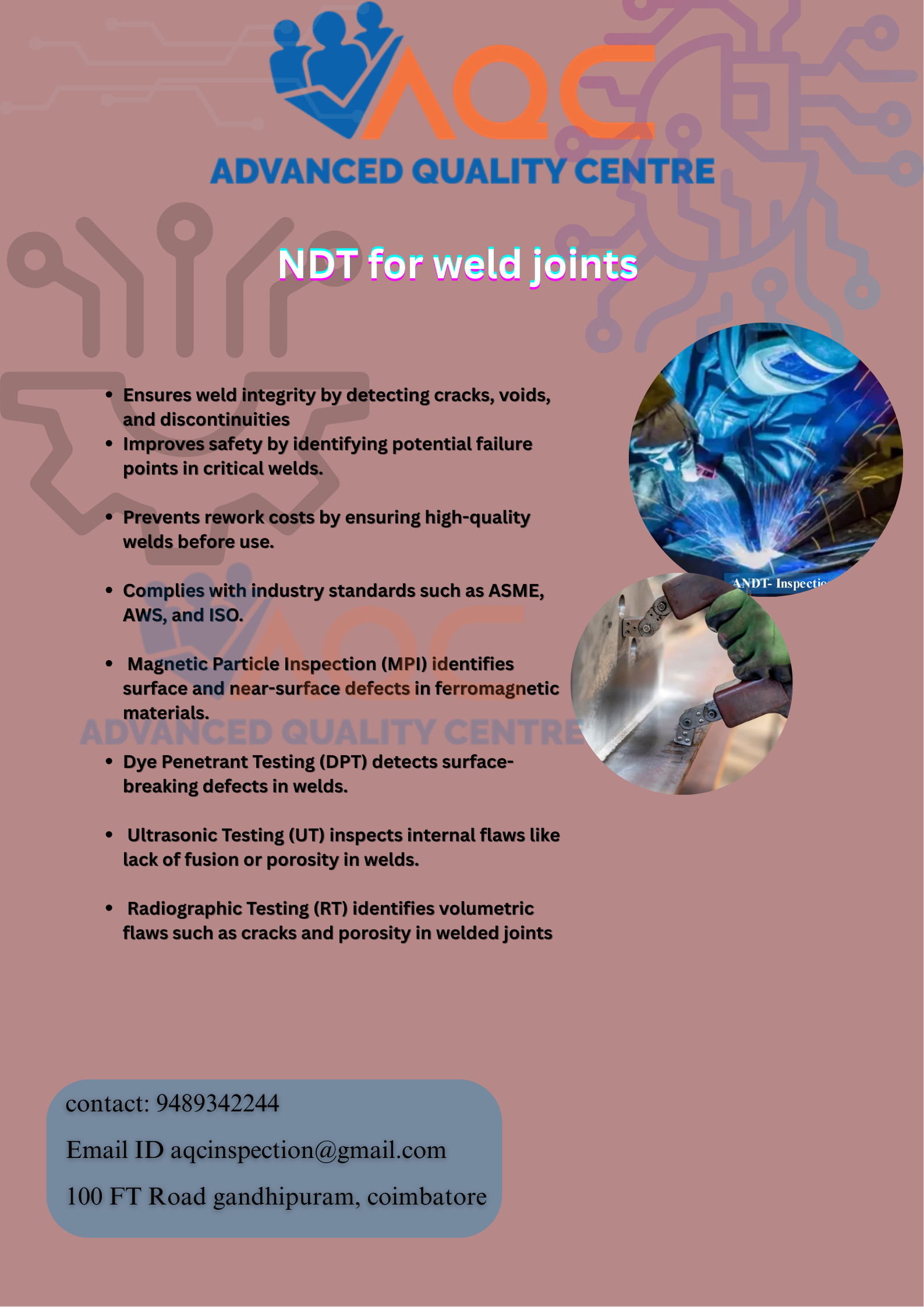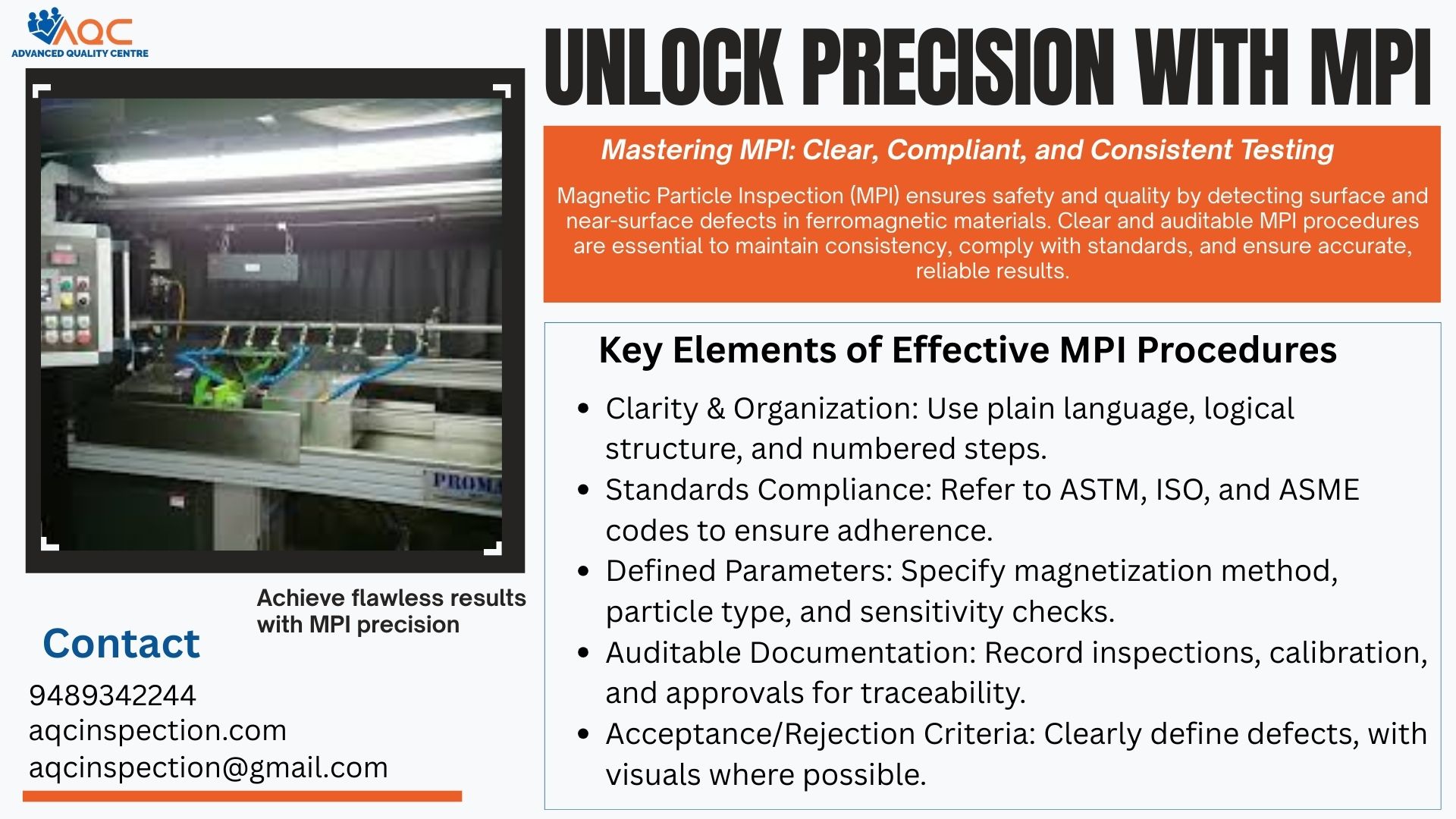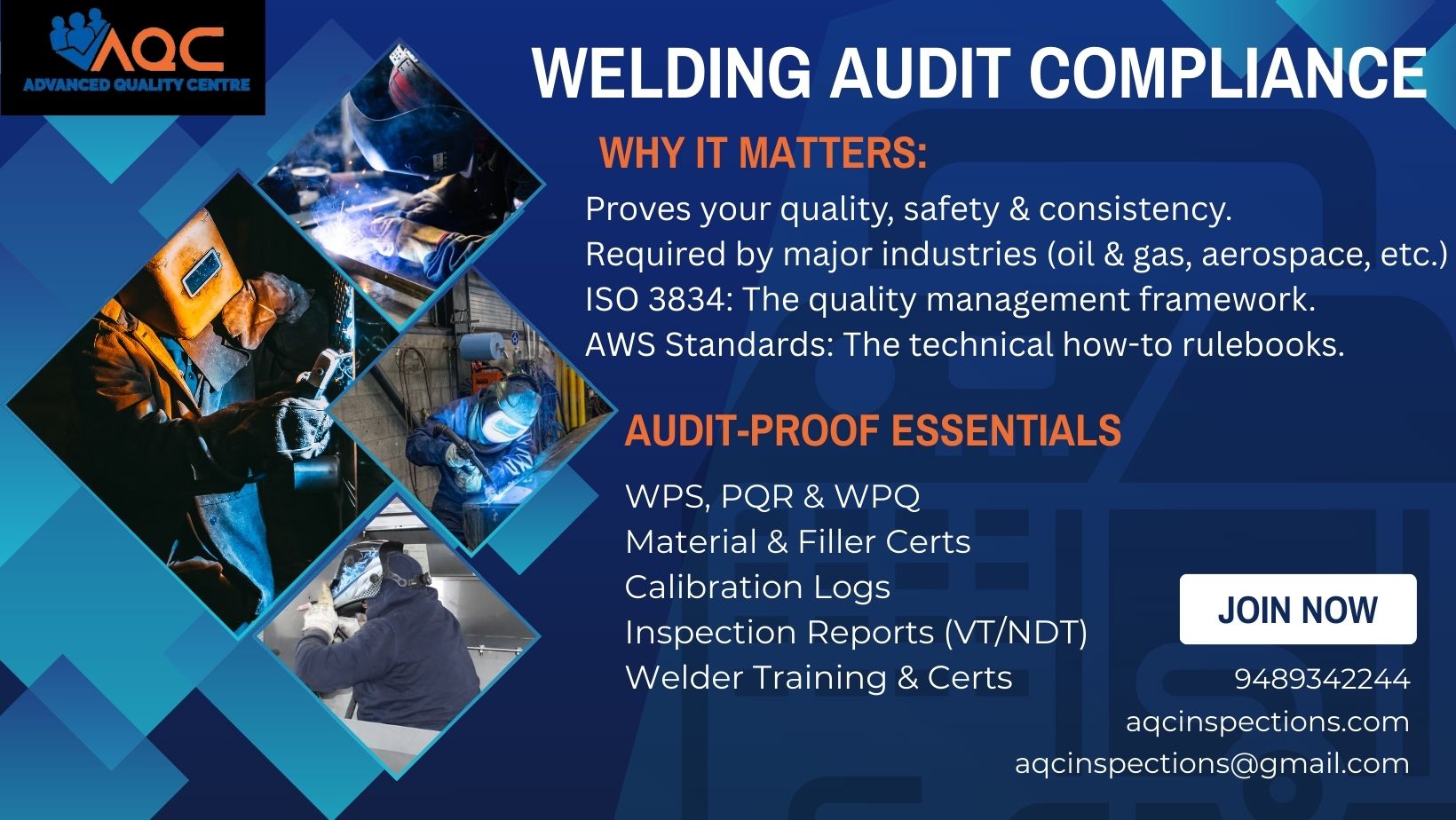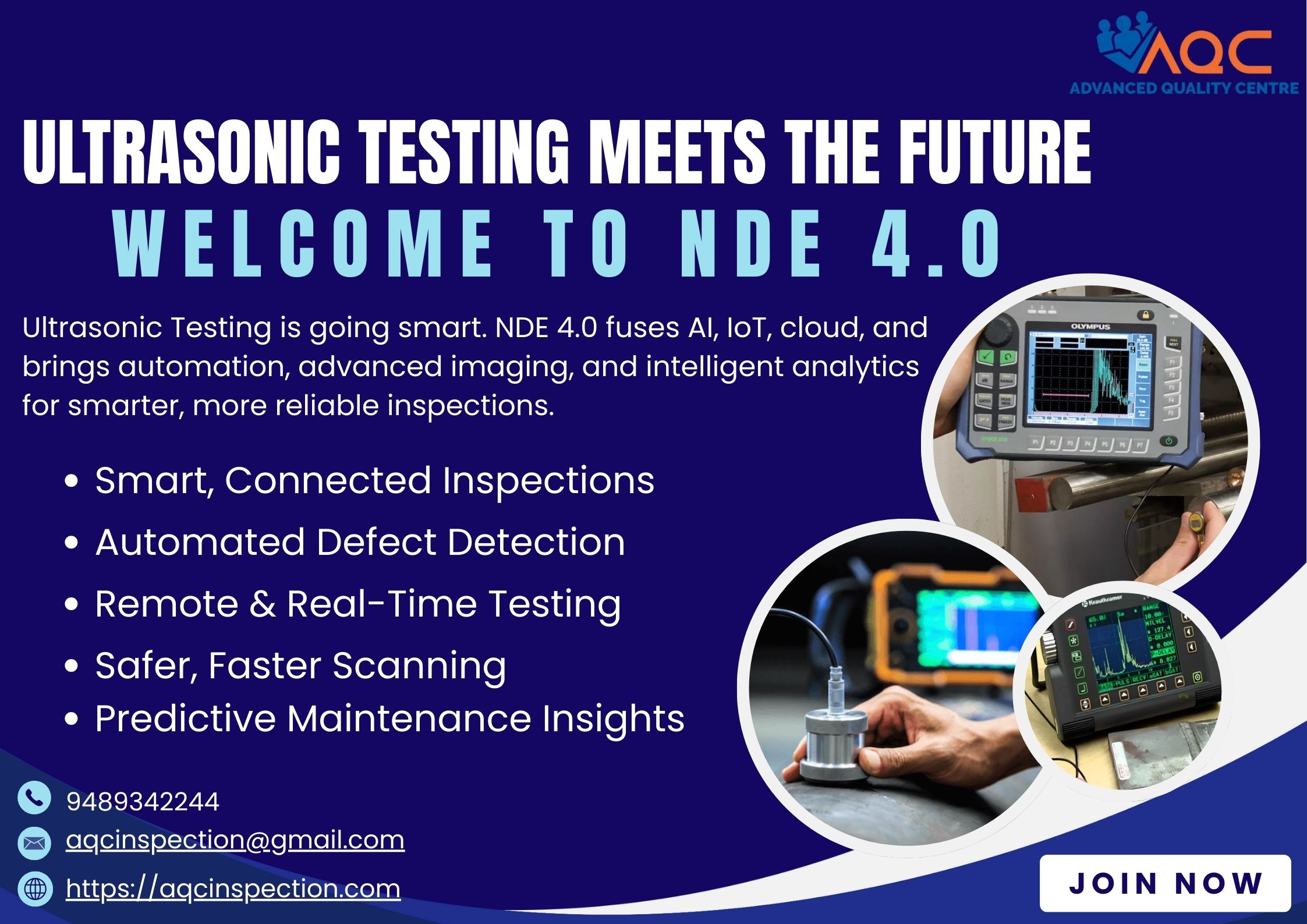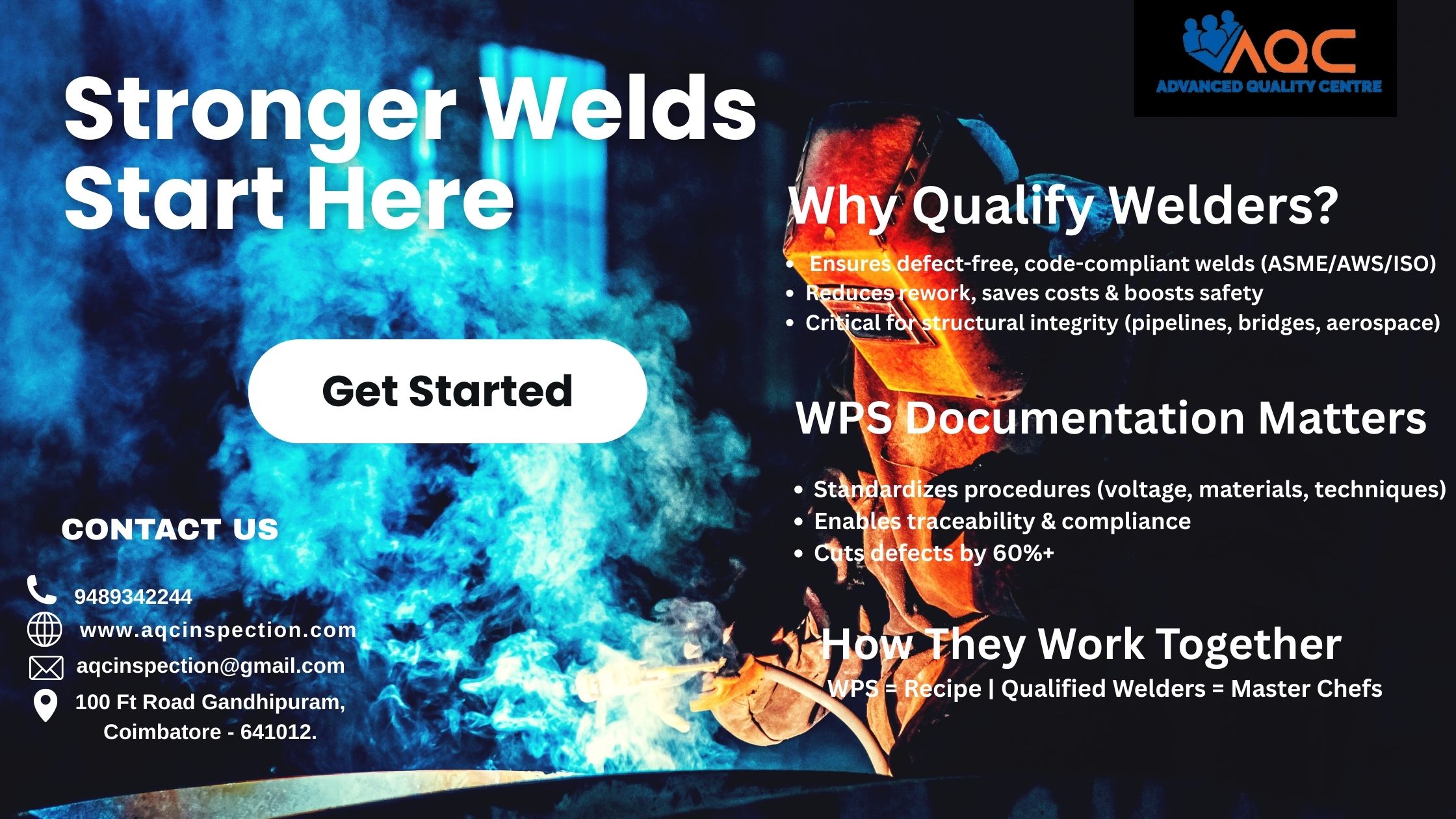In any fabrication process, welded joints are critical stress points that must withstand mechanical loads, thermal variations, and environmental factors. A failure in a weld joint can lead to catastrophic consequences—especially in sectors like oil & gas, aerospace, construction, and power generation.
At AQC (Advanced Quality Centre), we apply advanced Non-Destructive Testing (NDT) techniques to detect internal and surface defects in weld joints—ensuring reliability, durability, and safety without damaging the component.
Why NDT for Weld Joints Matters
Welding imperfections such as cracks, porosity, slag inclusions, lack of fusion, and incomplete penetration can compromise the structural integrity of a component. NDT allows early detection of such defects without altering or destroying the weld, making it essential for:
- New weld inspections
- In-service weld integrity evaluations
- Weld repair verification
- Third-party quality assurance
NDT Techniques for Weld Inspection at AQC
We deploy a combination of standardized and advanced testing techniques based on the material, application, and weld type:
-
Visual Testing (VT)
- First-line inspection method for surface flaws, undercut, misalignment, and surface porosity.
-
Magnetic Particle Inspection (MPI)
- Detects surface and near-surface discontinuities in ferromagnetic materials. Ideal for crack detection on weld beads and HAZ (Heat Affected Zones).
-
Dye Penetrant Testing (DPT)
- Suitable for non-magnetic or non-metallic materials. Effective in detecting surface-breaking cracks in welds.
-
Ultrasonic Testing (UT)
- Highly effective for internal flaw detection. It helps assess weld depth, fusion, and internal cracks in thick-walled components.
-
Radiographic Testing (RT)
- Uses X-rays or gamma rays to reveal internal defects like porosity, slag inclusions, and lack of fusion—commonly used for pipeline and pressure vessel welds.
The AQC Advantage
As an experienced provider of quality assurance services, AQC ensures all weld NDT procedures follow international standards such as ASME, AWS, ISO, and ASTM.
- Certified NDT technicians
- Calibrated equipment including MPI yokes with certified dead weights
- Detailed inspection reports with traceable documentation
- On-site and in-lab testing options
With AQC, you don’t just detect defects—you prevent failures.
Industries We Serve
- Oil & Gas
- Power & Energy
- Aerospace
- Construction & Infrastructure
- Manufacturing & Fabrication
FOR MORE INFORMATION AND TRAINING:
- Contact ADVANCED QUALITY CENTRE (AQC)
- Mail ID : [email protected]
- Contact: 8668082413
- Visit as : https://aqcinspection.com/
- Address: 100 ft road, Gandhipuram, Coimbatore.
- Visit our technical and career updates at our Blog site https://advancedqualitycentre.blogspot.com . orhttps://ndtcenter.blogspot.com
Subscribe our youtube channel to know more practical explanations https://aqcinspection.com/
